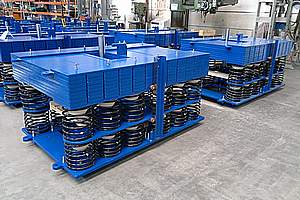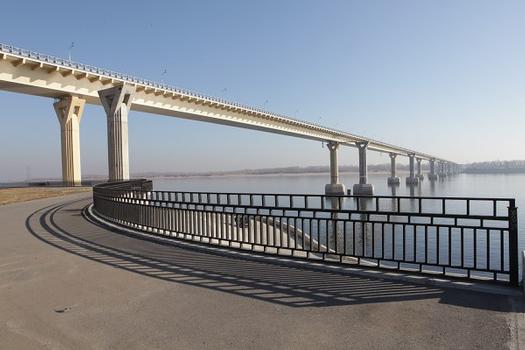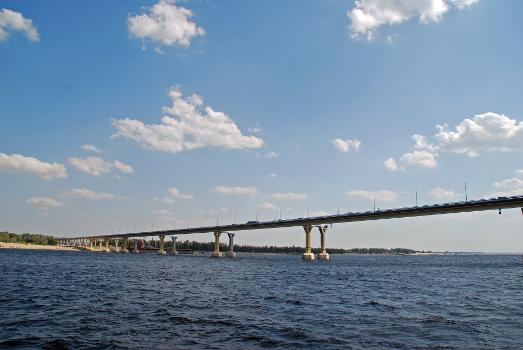General Information
Project Type
| Function / usage: |
Road bridge |
|---|---|
| Structure: |
Box girder bridge |
Location
| Location: |
Volgograd, Volgograd Oblast, Southern Federal District, Russia |
|---|---|
| Crosses: |
|
| Coordinates: | 48° 43' 18" N 44° 33' 0" E |
Technical Information
Dimensions
| main span | 160 m | |
| total length | ca. 7 100 m |
Cost
| cost of construction | ca. Ruble 2 000 000 000 |
Case Studies and Applied Products

Dancing Bridge of Volgograd tamed
The video which displayed the "dancing bridge of Volgograd" got world wide attention. In particular laymen made venturesome speculations of waves several meters high – in reality the vertical vibrations of the bridge deck were in the ran ... [more]
Chronology
| 20 May 2010 | The bridge is closed because of oscillations caused by wind. The resonance reaches vertical amplitutes of up to 1 meter. |
|---|---|
| 25 May 2010 | After an inspection finds no structural damage, the bridge is re-opened to traffic. |
Excerpt from Wikipedia
Volgograd Bridge (Russian: Волгоградский мост) is a concrete girder bridge over the Volga River in the city of Volgograd, Russia. The bridge and adjacent flyovers are 2,514 m (1.562 mi) long. The bridge, which was inaugurated October 10, 2009, after 13 years of construction, is a key part of a planned 30 km (19 mi) highway route that also includes a future bridge over the Akhtuba River.
Current state
Currently, a single span (a second is still under construction) connects Mamayev Kurgan on the right (western) bank of the Volga with the road to Krasnoslobodsk on a spit between the Volga and the Akhtuba. It is the first bridge over the Volga in Volgograd Oblast; previously, the only automobile route over the river in the region passed over the Volga Hydroelectric Station dam.
Oscillations due to wind
On May 20, 2010, authorities closed the bridge to all motor traffic due to strong oscillations caused by windy conditions. The bridge remained closed while it was inspected for damage until the morning of May 25. It was then reopened for public access. To suppress the oscillations of the bridge, semi-active tuned mass dampers were developed and implemented by the German company Maurer Söhne in collaboration with the Swiss Federal Laboratories Empa and mutually with the University of the German Federal Armed Forces. The concept of the semi-active tuned mass dampers was proposed and laboratory validated at the Swiss Federal Laboratories Empa by Dr. Felix Weber (Empa) and Dr. Marcin Maślanka (AGH University of Science and Technology). In autumn 2011, 12 semi-active tuned mass dampers were installed in the bridge. Each one consists of a mass 5,200 kg (11,500 lb), a set of compression springs and a magnetorheological damper.
Text imported from Wikipedia article "Volgograd Bridge" and modified on July 23, 2019 according to the CC-BY-SA 4.0 International license.
Participants
- Maurer Söhne GmbH & Co. KG (dampers)

Relevant Web Sites
Relevant Publications
- Blowing in the wind. In: Bridge Update, n. 92 (June 2010), pp. 4.
- (2015): Volgograd-Bridge: Efficiency of passive and adaptive Tuned Mass Dampers. Presented at: IABSE Conference: Structural Engineering: Providing Solutions to Global Challenges, Geneva, Switzerland, September 2015, pp. 1428-1435.
- About this
data sheet - Structure-ID
20057866 - Published on:
18/08/2010 - Last updated on:
17/09/2020










